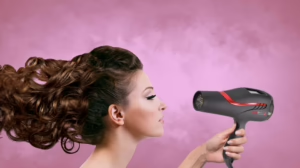Longing for Length: Tips for Growing and Maintaining Healthy Hair
Hair has long been associated with beauty, identity, and self-expression. For many, long hair represents femininity, elegance, and versatility, while also serving as a canvas for styles and trends. However, achieving and maintaining long, healthy hair can be a challenge due to various factors such as genetics, environmental influences, and hair care practices. This article offers a comprehensive guide filled with tips for growing and maintaining long, healthy hair, along with insights into common misconceptions and effective strategies.
Understanding Hair Growth
Before diving into tips for hair growth and maintenance, it is essential to understand the biology of hair. Hair follicles are responsible for hair growth, and each follicle can produce hair continuously for a period ranging from 2 to 7 years. The average rate of hair growth is about half an inch (1.25 cm) per month, translating to 6 inches (15 cm) a year if the hair is healthy and well-cared for. Factors that influence hair growth include genetics, hormonal changes, diet, and overall health.
The Hair Growth Cycle
The hair growth cycle consists of three phases:
-
Anagen (Growth Phase): This is the active growth phase, lasting several years. The length of this phase determines how long the hair can grow.
-
Catagen (Transition Phase): This is a short phase that lasts a few weeks, during which hair growth slows down, and the hair follicle shrinks.
- Telogen (Resting Phase): This phase lasts for several months. At the end of this phase, the hair falls out, and the cycle begins anew.
Understanding this cycle can help individuals develop realistic expectations regarding hair growth while identifying potential issues that may affect their hair.
Common Hair Concerns
Many people face challenges related to hair growth, including breakage, thinning, and slow growth. Here are some common issues:
-
Damage from Heat Styling: Frequent use of heat tools (flat irons, curling wands) can weaken hair and lead to split ends.
-
Chemical Treatments: Procedures like coloring, perming, or relaxing can alter the hair’s structure, often leading to damage.
-
Lack of Nutrients: A poor diet can hinder hair growth, resulting in lackluster, brittle hair.
-
Stress: High-stress levels can lead to hair loss, as stress affects the hair growth cycle.
- Health Conditions: Conditions such as thyroid disorders or hormonal imbalances can also impact hair growth.
Tips for Growing Long, Healthy Hair
1. Maintain a Nutrient-Rich Diet
The foundation of healthy hair lies in what you consume. A balanced diet rich in vitamins, minerals, and proteins can bolster hair health. Here are some key components:
-
Protein: Hair is primarily made up of a protein called keratin. Incorporate lean meats, fish, eggs, beans, and nuts into your meals.
-
Omega-3 Fatty Acids: These healthy fats can nourish hair follicles and promote scalp health. Foods high in omega-3 include salmon, flaxseeds, and walnuts.
- Vitamins:
- Vitamin A supports sebum production, which keeps hair moisturized. Sources include carrots, sweet potatoes, and spinach.
- B vitamins, particularly biotin, are essential for hair health. Avocados, eggs, and whole grains are great sources.
- Vitamin D helps create new hair follicles. Fortified foods and sunlight exposure can aid in its absorption.
- Vitamin E promotes circulation to the scalp and acts as an antioxidant. Nuts and seeds are excellent sources.
2. Stay Hydrated
Hydration is vital for overall health and impacts hair growth. Drinking adequate water helps maintain moisture levels in the body and supports healthy hair follicles. Aim for at least 8 glasses of water a day, and consider consuming water-rich foods like cucumbers, tomatoes, and watermelon.
3. Follow a Regular Hair Care Routine
Developing a consistent hair care routine is crucial for maintaining hair health. Here are some essential steps:
-
Shampooing: Use a sulfate-free shampoo that suits your hair type. Over-washing can strip hair of its natural oils, while under-washing can lead to buildup. Aim for 2-3 times a week.
-
Conditioning: Always follow up shampooing with conditioner to restore moisture. Focus on the ends of your hair, where it tends to be drier.
-
Deep Conditioning: Incorporate a deep conditioning treatment or hair mask once a week to provide extra hydration and repair.
- Gentle Drying Techniques: Avoid vigorous towel drying, which can lead to breakage. Instead, gently pat your hair dry or use an old t-shirt.
4. Minimize Heat and Chemical Damage
Limit the use of heat-styling tools and choose protective hairstyles that require minimal manipulation. If you must use heat, consider the following tips:
-
Heat Protectants: Always apply a heat protectant spray or serum before using hot tools to minimize damage.
-
Lower Temperatures: Use the lowest effective temperature for styling to reduce stress on your hair.
- Air Dry: Whenever possible, allow your hair to air dry rather than using a blow dryer.
5. Trim Regularly
While it may seem counterintuitive, regular trims can help your hair grow longer. Regular cutting (every 8-12 weeks) removes split ends and prevents further breakage. This practice encourages healthy growth, ensuring your hair looks and feels strong.
6. Incorporate Scalp Care
A healthy scalp is fundamental for luxuriant hair growth. Here are ways to care for your scalp:
-
Exfoliation: Just like the skin, the scalp can benefit from exfoliation. Use a gentle scalp scrub or a mix of sugar and oil to help remove dead skin cells.
- Scalp Massages: Gentle scalp massages stimulate circulation and promote hair growth. You can use essential oils like rosemary or peppermint for added benefits.
7. Manage Stress Levels
Chronic stress can lead to hair loss and inhibit growth. Here are methods to manage stress effectively:
-
Exercise: Regular physical activity boosts mood and reduces stress. Aim for at least 30 minutes of moderate exercise most days.
-
Meditation/Yoga: Mindfulness practices can help alleviate stress, promoting overall well-being.
- Sleep: Prioritize healthy sleep habits, as restorative sleep is essential for bodily functions, including hair growth.
8. Be Mindful of Your Hairstyles
Tight hairstyles can cause tension on the hair shaft, leading to breakage. Consider these tips:
-
Looser Styles: Opt for looser hairstyles that do not tug at roots.
- Avoid Constant Use of Hair Accessories: Regularly switching up your hairstyle can prevent repetitive strain on specific areas.
9. Stay Informed About Hair Products
Not all hair products are created equal, and choosing the right products for your hair type is crucial. Look for the following:
-
Natural Ingredients: Products with natural oils and extracts typically have fewer harsh chemicals that can damage hair.
-
Avoid Harsh Ingredients: Steer clear of sulfates, parabens, and alcohols, as they can dry out your hair.
- Read Reviews: Researching products and reading user reviews can lead to finding those that work best for you.
10. Consider Supplements Carefully
While a well-rounded diet should provide the necessary nutrients, some may consider supplements to enhance hair health. Potential supplements include:
-
Biotin: Known to strengthen hair and nails.
-
Collagen: May improve hair strength and thickness.
- Omega-3s: Support scalp health.
Consulting with a healthcare professional before starting any supplementation is crucial to assess suitability and dosage.
11. Experiment with Natural Remedies
Many individuals find success using natural oils and remedies to enhance hair health. Here are some popular options:
-
Coconut Oil: This oil penetrates the hair shaft, providing moisture and reducing protein loss.
-
Argan Oil: Rich in essential fatty acids and vitamin E, argan oil can improve shine and elasticity.
- Aloe Vera: Aloe vera’s moisturizing properties can soothe the scalp and enhance hair growth.
12. Consult a Professional
If experiencing significant hair loss or changes in hair health, consulting with a dermatologist or trichologist can provide tailored advice and treatment options.
Conclusion
Achieving and maintaining long, healthy hair is a combination of understanding its biology, adopting proper care techniques, and making mindful lifestyle choices. With a commitment to nourishing your body and following these comprehensive tips, you can enjoy the hair of your dreams. Whether you’re looking for growth, manageability, or style versatility, embracing a holistic approach to hair care will pave the way for luscious locks that make a statement.
[Modern_footnote_source]: This article has been compiled and referenced based on a variety of scientific literature and expert guidelines related to hair health and care practices. For further exploration, consider consulting dermatological studies, nutrition journals, and hair care resources.


























Add Comment